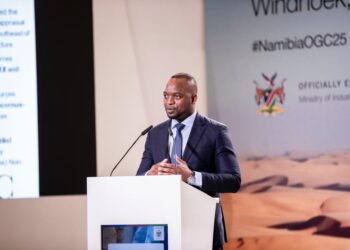
… Windhoek alone requires N$324 million
Local authorities have requested N$500 million from the Road Fund Administration (RFA) to repair roads damaged by recent rainfall.
RFA Chief Executive Officer (CEO) Ali Ipinge told The Brief that 20 out of 57 local authorities have so far applied for additional funding—totalling half a billion dollars—to fix damaged roads.
Ipinge, however, noted that the administration is unable to provide further financial assistance.
“They are requesting a huge amount of money. Unfortunately, we have no excess funds available, so there is quite a shortfall. There’s not much we can do, as we do not have access to additional funding,†he said.
The RFA has allocated N$600 million in the current financial year to local authorities across Namibia for the maintenance and construction of road infrastructure.
“We are preparing a formal submission to government requesting additional funds to address this matter. Consultations are ongoing. While we do not currently have the funds, this is not something that can be left unattended,†he added.
In the meantime, the CEO urged local authorities to reprioritise their road maintenance needs, focusing on repairing potholes rather than constructing new roads.
He also revealed that there is no additional budget available to address damage to national roads.
The Roads Authority (RA), which was allocated N$2.4 billion for the current financial year, has earmarked N$230 million to repair roads damaged by recent rains in the Oshana, Ohangwena, Oshikoto, Omusati and Kunene regions.
According to RA CEO Conrad Lutombi, a total of N$467.1 million is required to rehabilitate national roads.
Meanwhile, the City of Windhoek informed The Brief that the total estimated cost—including VAT—to repair rain-related damages is approximately N$324 million.
This includes N$226 million for the rehabilitation of severely damaged roads, N$15.1 million for pothole repairs, N$38 million for gravel road damage, N$1.3 million for flooded spatial areas, and N$637,000 (excluding VAT) for damaged bridges and culverts.
“It is expected that additional funding may be required as rainfall continues and more detailed assessments are conducted. The City’s technical teams are actively inspecting all affected areas to capture the full extent of the damage,†City spokesperson Lydia Amutenya said.
While the rains have subsided in recent days, forecasts indicate a possible return of rainfall next week.
The City stated that it has prioritised the most severely affected parts of the road network, with maintenance teams already deployed to carry out temporary repairs in high-traffic areas.
Some of the worst-hit areas include Katutura, Khomasdal, Academia, Dorado Park, Eros, Okuryangava and Otjomuise, among others.
“These interim fixes involve the use of soilcrete—a mixture of soil and cement—to fill potholes, providing safer conditions for road users while permanent solutions are being prepared,†Amutenya added.
Meanwhile, the Walvis Bay Municipality has estimated the damage to roads and sewer infrastructure at between N$200 million and N$300 million.
An amount of N$400,000 has been allocated for immediate dewatering efforts and temporary road repairs, while further procurement processes are underway to address additional repairs.
“Under normal circumstances, the Municipality budgets approximately N$20 million annually for routine road maintenance and around N$50 million for road rehabilitation. Given the impact of the recent rains, efforts are being made to secure additional funding from the RFA and RA, though final details pertaining to this engagement are yet to be confirmed,†said municipality spokesperson Anita Kaihiva.
The Ondangwa Town Council indicated that it is using its existing maintenance budget to carry out road repairs; however, the total cost of the damage has not yet been precisely determined.
“The Council has notified the Roads Authority about the damaged section of road under their jurisdiction. Since the RA handles its own maintenance, no additional funding will be required from them,†said the Council’s Head of Corporate Communications, Petrina Shitalangaho.
She said repair works are expected to take about two months to complete, as they are being handled in-house, eliminating the need for contractor advertisements or evaluations.











